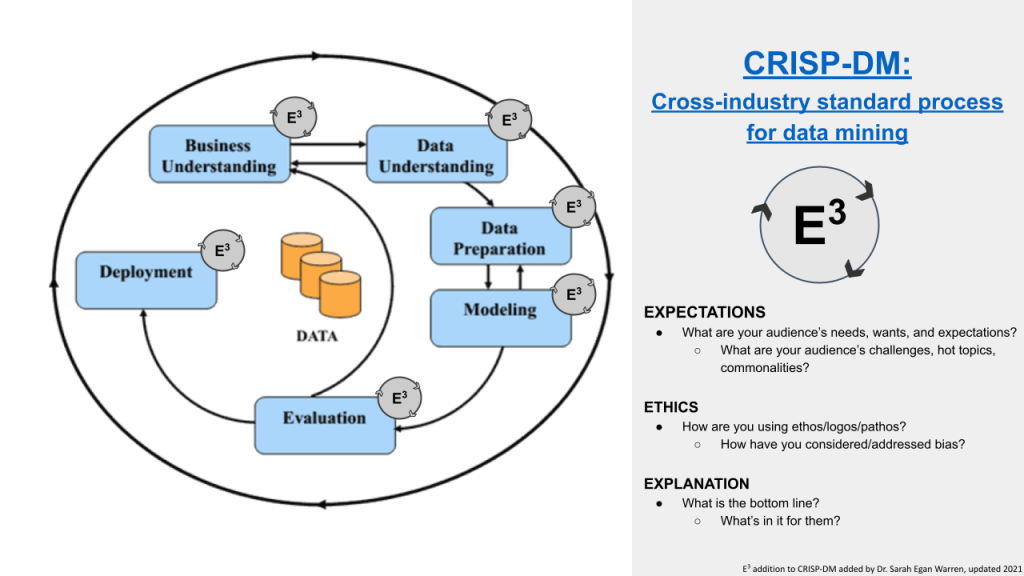Do you know what differentiates a great data scientist from a good data scientist?
Every year, there is an influx of data scientists into the workforce. How can you distinguish yourself in such a crowded market? Working with SAS as a customer facing data scientist for close to five years, I had the unique opportunity of interacting with several business stakeholders about their analytics journey and data science needs, and I noticed a pattern for success.
Here are the three most important lessons I’ve learned in my data science career, which are reinforced throughout my master’s degree at the Institute for Advanced Analytics (IAA).
#1 Put yourself in the shoes of business leaders
Empathizing with your stakeholders and understanding their daily workflow and pain points is the first step to becoming a successful data scientist, whether you are working with research analysts, salespeople, marketers, or executives.
There’s a reason why the first step in the CRISP-DM framework, the cross-industry standard process for data mining, is “business understanding.” Identifying your stakeholders before beginning any data science project and involving them early and frequently will yield more productive results than building a model or creating a process in the dark.

While I had used CRISP-DM in many of my customer engagements at SAS, my understanding was enhanced at the IAA by the concept of incorporating Dr. Sarah Egan Warren’s three E’s—Expectations, Ethics, and Explanation —at each stage of the framework.
#2 It’s not about you; it’s about the audience
During my time at SAS, I was in charge of product demos and was introduced to Peter Cohan’s book Great Demo. He discussed the idea of “DO THE LAST THING FIRST” and how it can help make product demos and presentations more crisp, compelling, and effective.
At the IAA, I learned about “BOTTOM LINE UP FRONT,” or “BLUF.” This idea was reinforced. It is an approach to organizing our presentations so that we deliver the most important message first. I also learned the Power of Three as an effective organizing principle to help structure my presentations and messaging for the audience.
Every exciting story has three major components: the beginning, the middle, and the end. I could connect with the audience more effectively by making these adjustments to my presentations. Here is a mental model that has helped me deliver my message during the IAA’s numerous presentations.

#3 Stay up to date
The Institute does an excellent job of introducing a variety of tools and technologies commonly used in the data science industry, in addition to the necessary presentation and communication skills. Data scientists must be insatiably curious and eager to learn new tools and adapt to changes. The key to achieving this is continuous learning.
How do you stay current in the data science industry? Here are a few resources that have helped me and may help you as well.
- Follow the leaders on LinkedIn/Twitter – Geoffrey Hinton, Yann LeCun, Andrew Ng, Cassie Kozyrkov, Andriy Burkov
- Listen to AI/ML Podcasts – Lex Fridman, Data Skeptic, TWIML
- Conferences and Meetups – The AI Summit, ODSC, NeurIPS
- Articles and Blogs – Towards Data Science, KDnuggets, Analytics Vidhya, Google AI Blog, AWS ML, Netflix ML
Thinking like a business stakeholder, presenting with an audience-centric mindset, and being a lifelong learner will undoubtedly put you on the path to success as a data scientist.
Columnist: Nikhil Suthar
